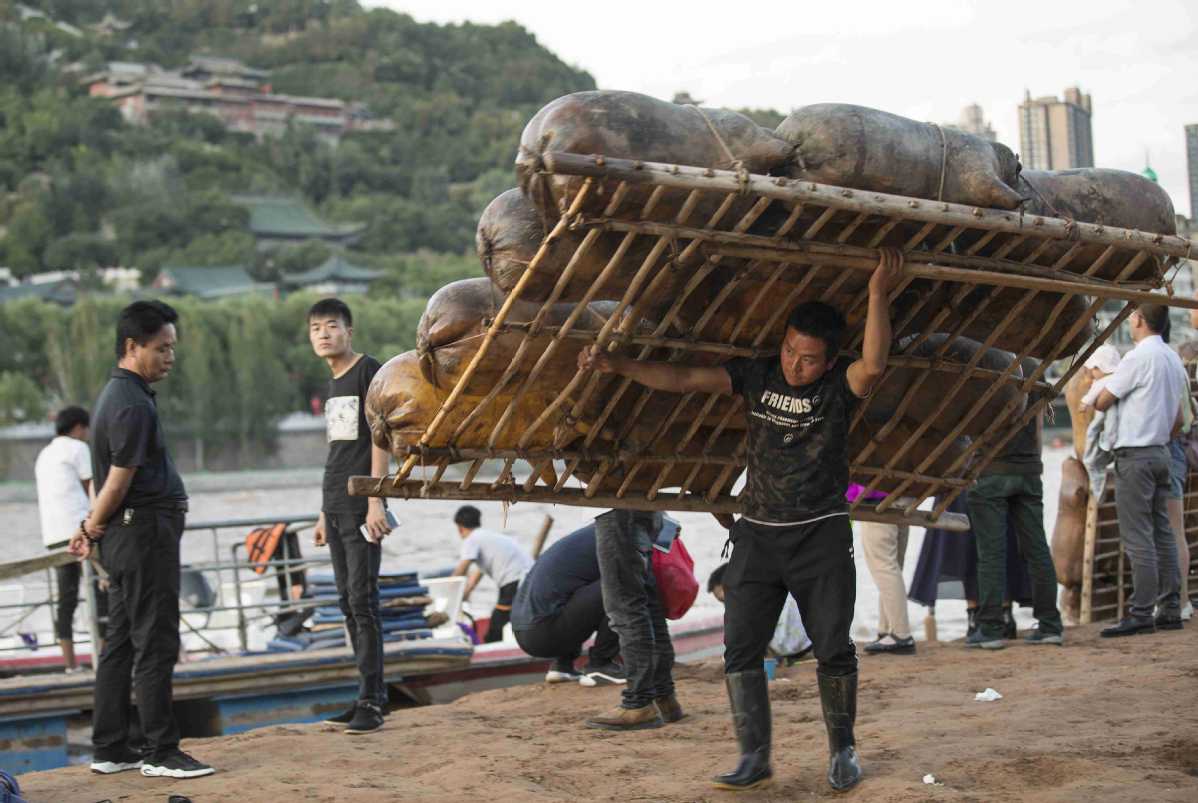Yellow River raftsmen ride changing currents to tourism profits


YINCHUAN-After making sure that the tourists were sitting securely on his sheepskin raft, Tong Jinding leaned forward and pushed the vessel from the shore with an oar. To the splash of the water, he chanted a local folk song about the Yellow River, the country's second-longest waterway.
"The tourists take photos and videos of the scenery as we drift on the water," he said. "They are happy, and so am I."
Tong, 37, lives in Shapotou village and works at a scenic spot in Zhongwei, Ningxia Hui autonomous region, through which 397 kilometers of the Yellow River flows.
As the COVID-19 epidemic wanes in China, the Shapotou scenic spot has once again started to embrace tourists.
Tong's village is less than 1 km from the scenic spot, and it is where the Yellow River and the Tengger Desert, the fourth-largest in China, meet.
It is believed it was the place where the Tang Dynasty (618-907) poet Wang Wei wrote that "in the boundless desert lonely smoke rises straight, over the endless river the sun sinks round".
Tong said when he was a child he wondered why the poem was so beautiful "but life here was so hard".
Before the 1980s, villagers survived for generations from farming, although the barren land often failed to produce enough wheat and corn for them to earn extra income. They also had no opportunities to run businesses.
To support their families, Tong's father and other villagers used to transport goods and passengers in their traditional rafts made from inflated sheepskins and lengths of wood.
When winter came, villagers relied on frozen pears, dates and coal from upstream.
Carrying wooden oars and deflated sheepskins, his father led a team upstream for more than 30 km. Once they had purchased their goods, they assembled the sheepskin rafts and drifted downstream. "It took one day for my father to tramp over the hills and get there, and another day to drift back home," Tong recalled.
However, there were submerged rocks and whirlpools on the way back home, posing a challenge for the raft operators.
Villager Tong Facai remembers that they had to navigate their 2-meter-wide raft through a narrow waterway churned by two whirlpools.
"It was challenging. I had been rowing rafts for 30 years, however, I still had a lingering fear every time I zipped through the waterway," the 55-year-old said.
In recent years, infrastructure, including transportation, has improved a great deal in Zhongwei.
























